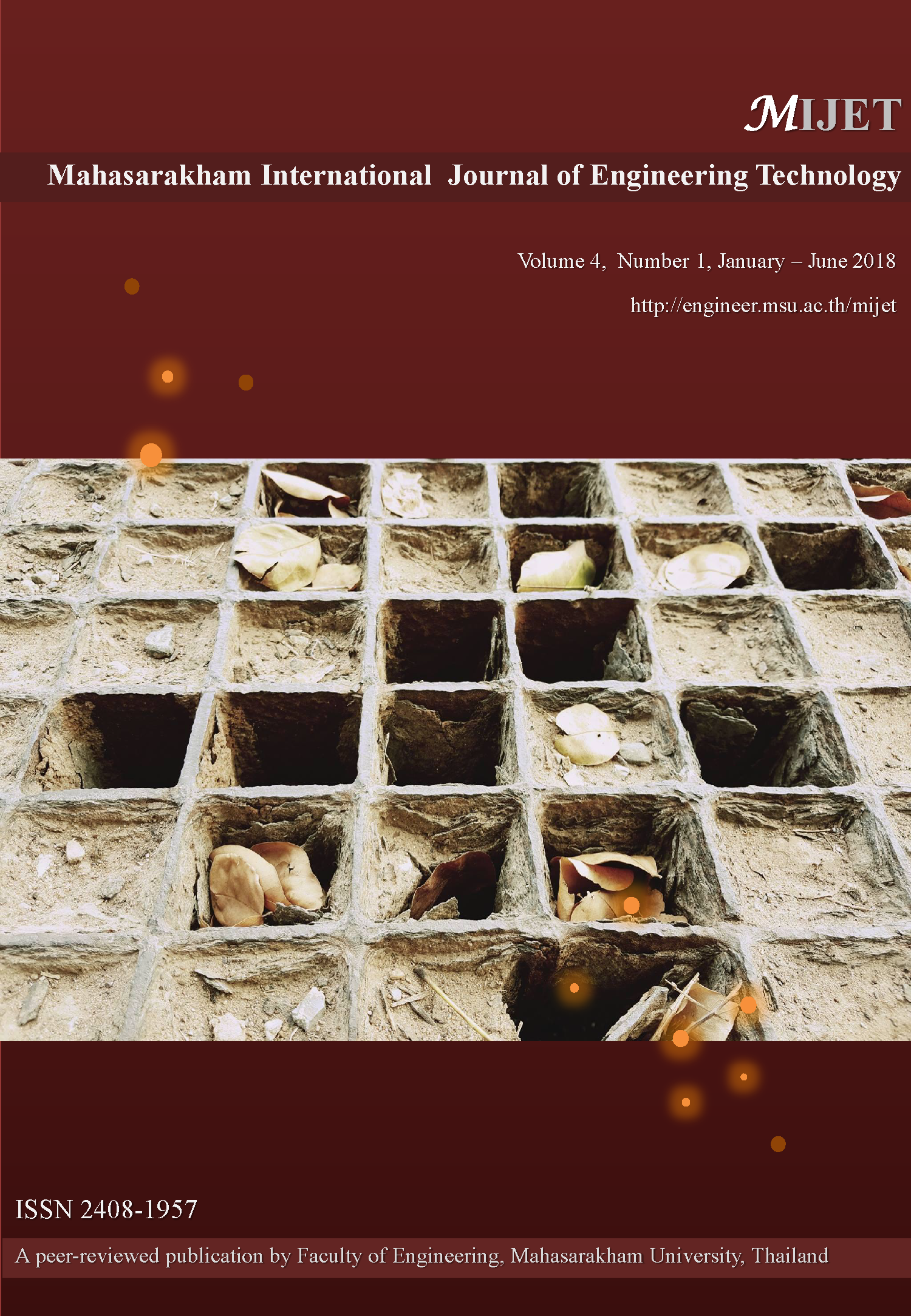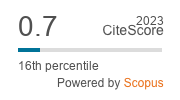Strength of Sand with varying Fine Content in Northeast Thailand
doi: 10.14456/mijet.2018.1
Keywords:
Sand, Fine content, Strength, Triaxial, cohesion, Internal friction angleAbstract
Silty sand and sandy silt can be found in most areas of Northeast of Thailand. We measured the effective cohesion and internal friction angle of the soil in different proportions between coarse grain and fine grain. Soil samples from Khon Kaen province were separated into two different types: coarse grain and fine grain, and then were mixed in ratios of 0 to 100%. The effective cohesion and internal friction angle values were derived from drain triaxial tests.The finding showed that soil specimens were SM (USCS) or A-2-6 (AASHTO), and the effective cohesion and internal friction angle of the reconstituted had 3-7 t/m2 and 20°-27°. Functional relationships between the parameters to the fine content were also derived, which could be used to estimate the value of the effective cohesion and internal friction angle.
References
[2] SKEMPTON, A.W. Discussion on the planning and design of the new Hongkong airport. Proc. Inst. Civil Engrs., Vol. 7, 1957, pp 305-307.
[3] UDOMCHOKE, V. Origin and engineering characteristics of the problem soils in the Khorat Basin, Northeastern Thailand. Doctoral degree dissertation, Asian Institute of Technology, Bangkok, Thailand, 1991.
[4] PHIEN-WEJ, N., PIENTONG, T. AND BALASUBRAMANIAM, A.S. Collapse and strength characteristics of loess in Thailand Eng. Geology. Elsevier, vol. 32, 1992, pp. 59-72.
[5] NOPANOM K., JARIYA C., PHATCHARAPHAN C., PAKAWUT O., SIRIPONG Y. AND CHOKCHAI C. The updated physical properties of soil in Northeast Thailand. Proc. The 6th International Conference on Science, Technology and Innovation for Sustainable Well-Being (STISWB VI), 28-30 August 2014, Apsara Angkor Resort & Conference, Siem Reap, Kingdom of Cambodia, Companion CD, 2014.
[6] CHING S. CHANG AND ZHEN-YU YIN Micromechanical modeling for behavior of silty sand with influence of fine content International Journal of Solids and Structures. Vol. 48, 2011, pp. 2655–2667.
[7] YANG J., WEI L.M., DAI B.B. State variables for silty sands: Global void ratio or skeleton void ratio? The Japanese Geotechnical Society. Vol. 55, No. 1, Feb 2015, pp. 99–111.
[8] ALI LASHKARI Recommendations for extension and re-calibration of an existing sand constitutive model taking into account varying non-plastic fines content. Soil Dynamics and Earthquake Engineering. Vol. 61-62, 2014, pp. 212–238.








